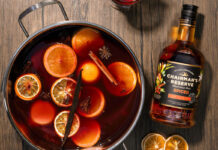Attention should be paid to lower ABV drinks

THERE’s no denying the growing acceptance and demand for low and no-alcohol drinks in the on-trade. While many point to factors such as the lowering of the drink-drive limit, others argue that there are wider societal shifts taking place – namely, a growing desire to lead healthier lifestyles.
And never is the focus on health greater than summertime, which, according to producers of low-ABV drinks, is an ideal time for the trade to capitalise on the category.
Stephan Kofler, sales and marketing director for German brewer Krombacher, said demand for low and no-alcohol drinks is rising off the back of a growing desire amongst consumers to be healthier.
“Some are giving up alcohol entirely, others are going for a quality over quantity approach, so demand for great tasting low and no-alcohol drinks has been rising and will continue to rise,” he said.
Kofler added that with healthier food “gaining space on bar, pub and restaurant menus”, a healthier drinks range “is the perfect pairing”.
Rob Salvesen, senior marketing manager at Kopparberg, echoed Kofler’s stance, stating that Scotland “is undergoing a cultural shift”, with those frequenting the country’s pubs and bars “increasingly opting for alcohol-free nights out in an effort to be more health conscious”.
The low and no-alcohol fruit cider category is, Salvesen said, proving popular with consumers who are “looking for a more refreshing, tasty product in place of blander and less exciting propositions which have dominated low and no-alcohol drinking occasions in the past”.
However, operators should not just focus on one drinks category when it comes to offering a comprehensive low and no range, reckons Salvesen.
He said licensees should look across “a wide range of categories to identify products that are refreshing and tasty, but at the same time make their customers feel included amongst their peer groups when they choose an alcohol-free alternative”.
“Gone are the days when an orange juice or cola were an adequate offering behind a bar,” he said.
“With so many good alcohol-free alternatives available to consumers these days, those consumers that choose to go alcohol-free expect more from the venues that they frequent – and are willing to pay accordingly.”
Amit Sood, senior whisky specialist at Edrington-Beam Suntory UK, agreed. He said that lower ABV cocktails, for example, “continue to shape drinks menus nationwide, with consumers opting for light and simple aperitif spritz style drinks”.
And for bars looking to capitalise on lower ABV cocktails this summer, Sood reckons there’s a few key considerations.
“When creating a low-ABV cocktail, it’s important to remember that consumers expect the same level of care to be taken when preparing their drink as you would preparing a traditional cocktail,” he said.
“This means presentation is key, so always remember to use attractive garnishes and the right glassware.
“Another key thing to consider when preparing a low-ABV cocktail this summer is to use fresh, seasonal ingredients.
“Keeping flavours light and floral is the perfect way to bring a little bit of summer into each serve.
“Finally, don’t overcomplicate it; lower ABV serves are about experimenting with fewer flavours and working out how best to compliment the spirits used.”



















